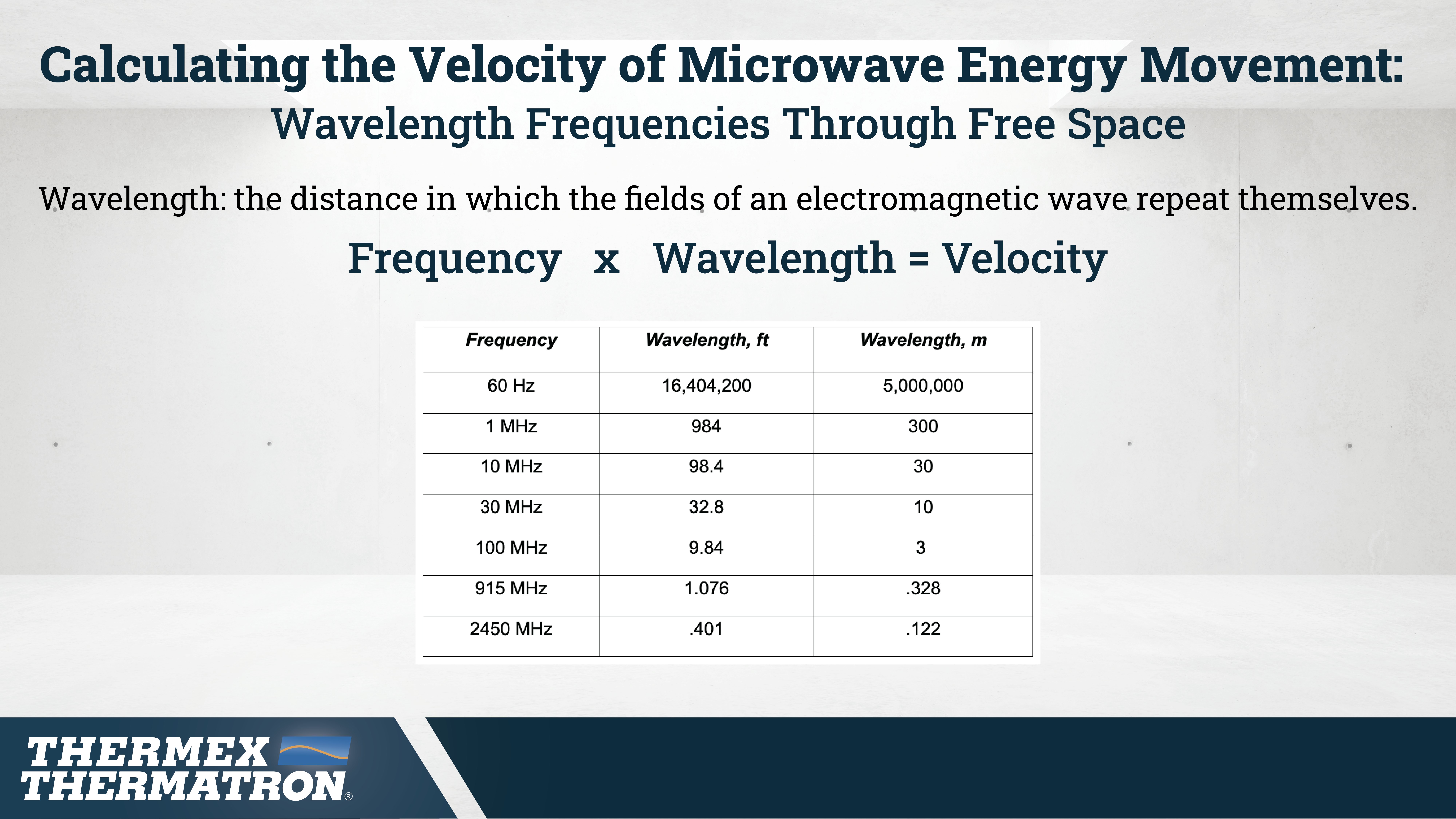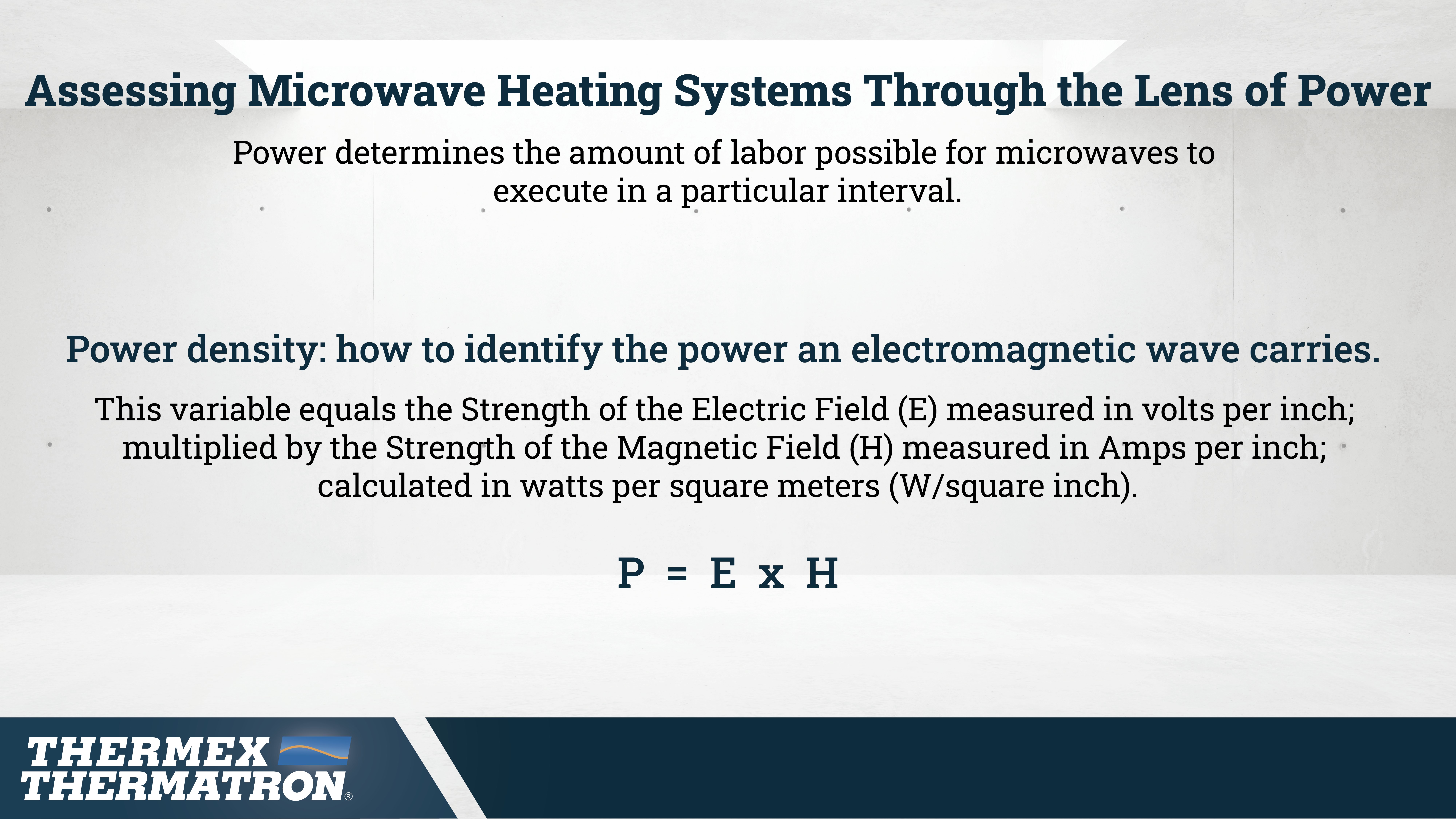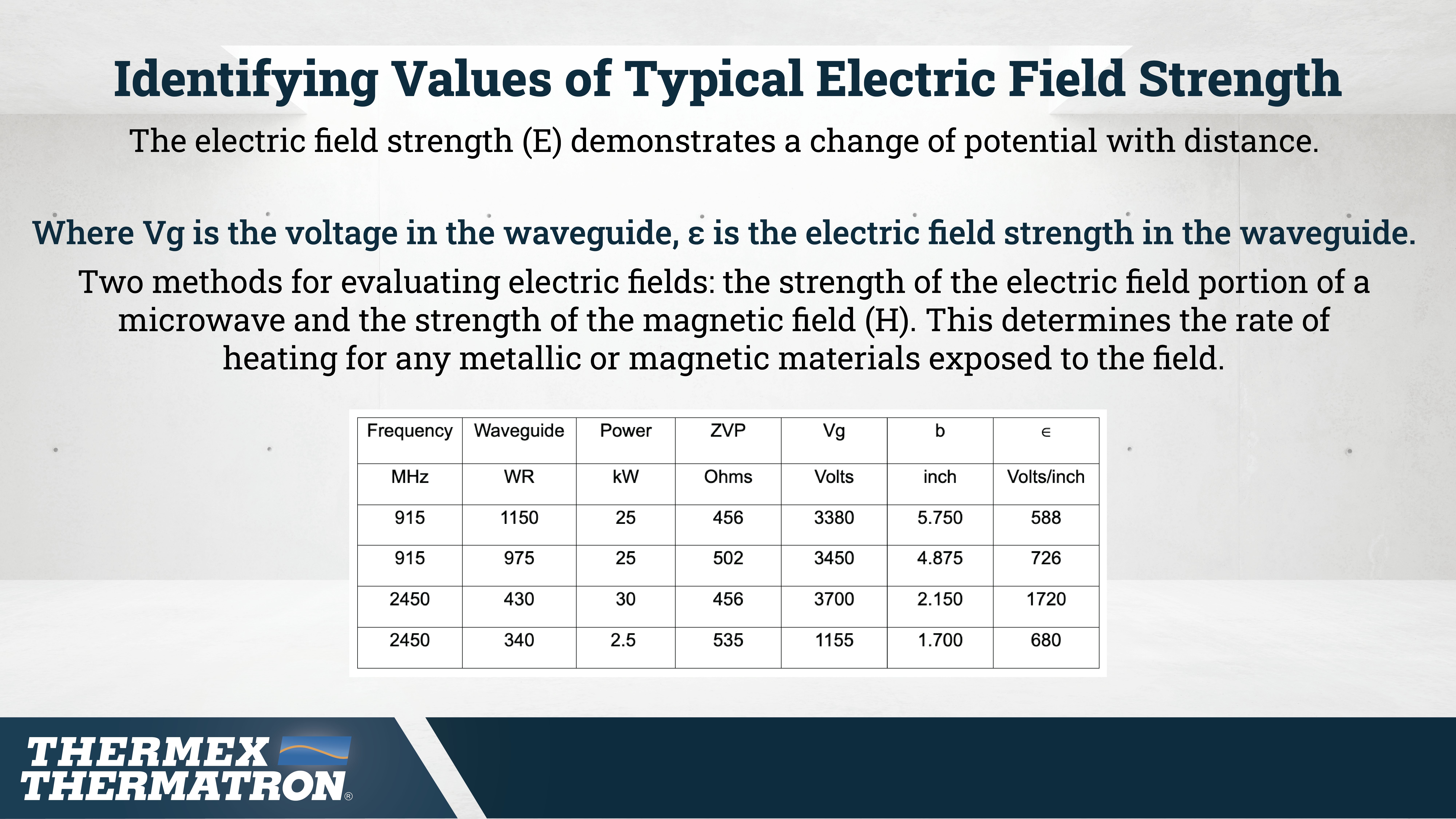Understanding Microwave Heating Systems: The Strength of a Single Electromagnetic Wave
Thermex-Thermatron Systems
Harnessing the competitive advantages of rapid-acting microwave (MW) heating technology, production facilities that are best equipped to optimize high-quality materials enter in with high-level understanding: maximizing the nature of efficient technology. For over eight decades, the dielectric heating pioneers and industrial engineering leaders have been Thermex-Thermatron Systems (“Thermex”) who have cultivated a global background of real-world applications and expertise; trusted by essential businesses across the world. Thermex has created a new series to break down fundamental MW insights — offering industries the depth of knowledge they need to unleash robust MW heating systems to the fullest extent of their rigorous agility.
Measuring Frequency in the World of Microwaves:
Illuminating Megahertz and Gigahertz
To better understand the value of microwave frequencies, think of the number of pulses per second for a microwave as the same unit as there are seconds in a century. When drawing on the properties of microwave heating, frequency is understood through indicators such as Megahertz and Gigahertz.
Notably, frequency is a key measure pinpointing the gustiness of microwave fields. For reference, mega denotes a million and giga signifies a thousand million. Additionally, the inverse unit, expressing the duration of a cycle, is often called a cycle time. In free space, moving at the speed of light, the distance traveled during one microwave cycle ranges from around one inch to about one foot. With hertz marking a cycle or gust per second, microwave energy with frequency racing at megahertz or gigahertz unleashes the power of a million to a thousand million gusts of MW energy per single second.
Technically, any kind of electromagnetic energy with a wavelength shorter than one meter is considered a microwave. Therefore, the frequency must be higher than 0.3 GHz. One of the reasons microwave heating systems are so efficient: their concentrated level of power. More than 75 kilowatts average power can be generated at immense frequencies up to 10 GHz. Only a few watts of power are generated at frequencies beyond that and up to about 100 GHz.
While the absorption characteristics of industrial process materials change with frequency, they do so slowly. As a result, variables such as microwave equipment availability and price, industrial process material dimensions, and FCC frequency allocations will dictate the best choice of frequency. The FCC has assigned four bands for microwave industrial heating in which there is no legal limit to the permitted radiation. Centered on 0.915 GHz, 2.45 GHz, 5.80 GHz, and 22.0 GHz, today, industrial power sources are only available at the lower two of those frequencies.
Breaking Down Wavelengths:
Diving into the Process of Traveling Electromagnetic Energy
A wavelength (λ) is defined as the distance in which the fields of an electromagnetic wave repeat themselves. You can calculate the velocity of the movement of microwave energy through the following formula:
Frequency x Wavelength = Velocity
In free space, electromagnetic waves travel at the velocity of light, 3 x 108 m/s: a consequence of the physical constants in Maxwell’s laws that illustrate both the electric and magnetic forces. Learn more about the wavelengths for various frequencies at play through free space (in air) in the table below:

Use the formula below to calculate the wavelength of an electromagnetic field traveling in a material with a dielectric constant K:

Where:
λ = The wavelength of the electromagnetic field traveling in a material (in meters)
λ0 = The wavelength of the electromagnetic field traveling in free space (in meters)
K = Dielectric constant of the material
Notably, the dielectric constant is greater than 1 for the majority of materials. Consequently, the wavelength in the material is significantly shorter than when moving across free space.
Power in Microwave Energy: Expressing How Much Work Is Achievable in a Given Time
Another key aspect to understanding microwave heating systems: their power. Generally measured in kilowatts, power determines the amount of labor possible for microwaves to execute in a particular interval. A single kilowatt delivers about one third more power than one horsepower; approximately 1 Btu/second, 3400 Btu/hour, about 3.4 pounds of steam per hour, or about 1/4 kilocalorie per second. In commercial use, the power levels of microwaves tend to range between 1 and 500 kW. Consider that the energy available from a typical 75 kW microwave generator stands at enough force to boil away about 250 pounds of water every hour.
Looking into power density (P), this variable helps you identify the power an electromagnetic wave carries — matching the Strength of the Electric Field (E), measured in volts per inch; multiplied by the Strength of the Magnetic Field (H) measured in Amps per inch; calculated in watts per square meters (W/square inch).
P = E x H
Using a microwave oven to drive accelerated production, the power density can also be expressed in function of the volume of the oven (in W/cubic inch). Because microwave generators are rated in power, our emphasis on qualitative understanding is through the lens of power instead of energy. Similarly, the strength of the fields in a given waveguide correlates with how much power flows through it — not with how much energy has passed through it.

Exploring Field Strength: Determining the Rate of Heating When Applying MW Heating Systems
Field strength is not directly a measure of power, functioning much like pressure in a fluid analog. Notably, the electric field strength (E) demonstrates a change of potential with distance; also denoting the force exerted on a unit electrical charge. This is why the amount of torque operated on a linked-together pair of opposite charges (known as a dipole) appears directly proportional to the strength of its electric field.
Examine the chart below to identify the values of typical electric field strength transpiring inside the waveguide:

For reference, where Vg is the voltage in the waveguide, ∈ is the electric field strength in the waveguide. In addition to the strength of the electric field portion of a microwave, there is also the strength of the magnetic field (H) — a key method to determine the rate of heating for any metallic or magnetic materials exposed to the field.
On the whole, when metallic and/or magnetic materials in oven walls absorb magnetic field energy and convert this into heat, the amount is almost always negligible. In fact, in some cases such as in the process of shielding or vestibules, there is a need to strongly absorb microwaves. Notably, these are the cases that employ the absorption of magnetic fields via metallic and/or magnetic materials rather than the production of useful heat; for instance, like with microwave chokes or absorbing materials. Considering that the microwave is a blend of electric and magnetic fields continually converting into each other, absorption of either type of field actually weakens both types of fields simultaneously.
Meeting Escalating Demands Through a Strategic Manufacturing Partnership
Operating from a clear comprehensive overview of dielectric heating, manufacturers will be better equipped to maximize the labor-saving value of microwave heating systems. Serving industrial applications through highly engineered versatility, Thermex-Thermatron creates customized solutions that offer a more efficient use of energy; so factories can trust repeatable outcomes; made to fulfill precise requirements for today’s ever-changing global sectors.
With the ability to finesse electromagnetic waves and their unique properties that facilitate revolutionary technology, Thermex-Thermatron engineers can help you leverage a mastery of MW heating. Utilizing dielectric heating systems that are intelligently designed for safety of use, enhancing working conditions and simplifying integral processes, lean into the advantages of Thermex’s over 80 years of expertise; from insights into design and engineering down to manufacturing impeccable outcomes.
Optimizing well-made tools and the benefits of proven technology, you can put agile machine types to the test in Thermex’s cutting-edge in-house laboratory, ThermaLab; drawing on support from our engineers to select the system you need to deliver on crucial, desired results for your process materials. These are the technical insights that have allowed Thermex-Thermatron to pioneer and shape the radio frequency and microwave technology arenas all around the world. Navigate the nuances of intricate products and processes with equipment capable of achieving consistent, skillful performance — and advance production system-wide through invaluable resources.
For Thermex and Thermatron inquiries, contact our Director of Sales, Dean Mancuso (Sales@thermex-thermatron.com; 502/916-8972 or 502/243-5636).
For FIAB and Oteman inquiries, contact our Director of Business Development, Traci Evling (Traci@thermex-thermatron.com; 502/916-8981 or 904/662-2169).

